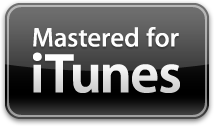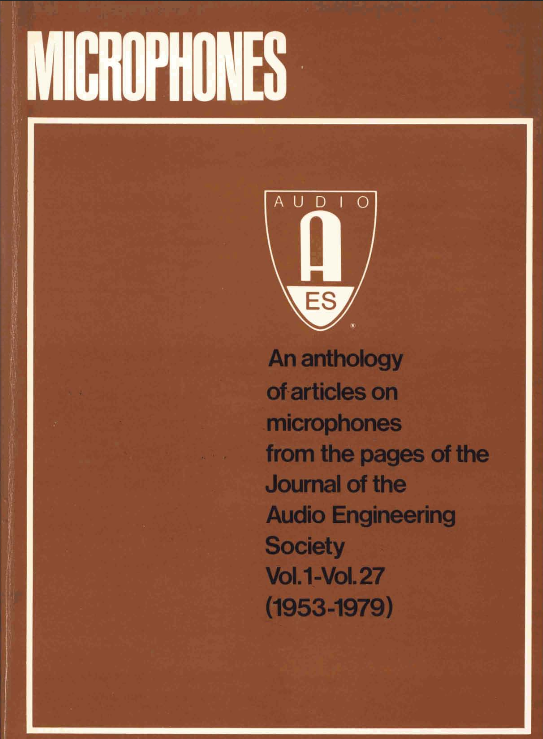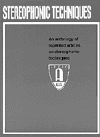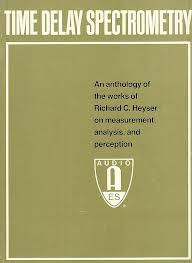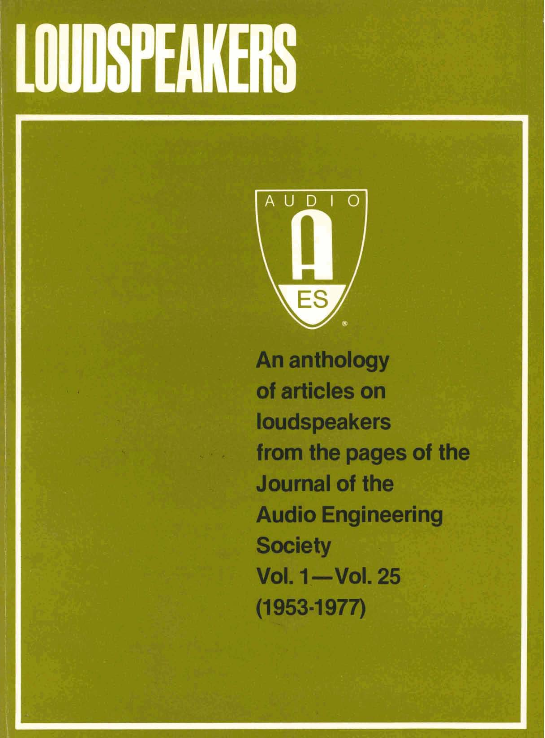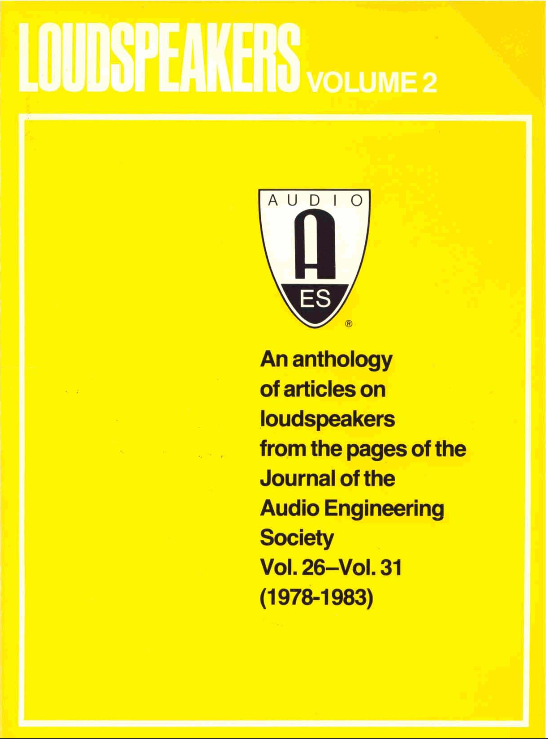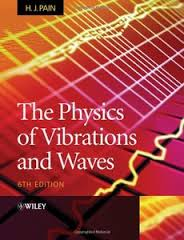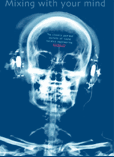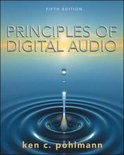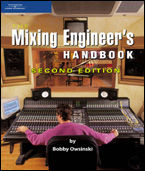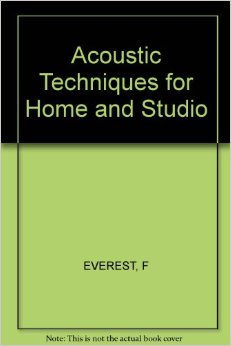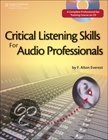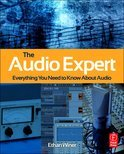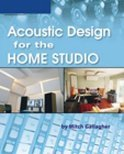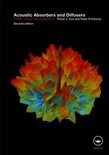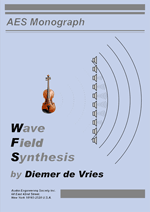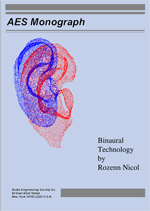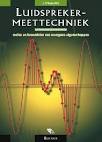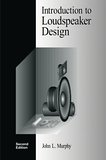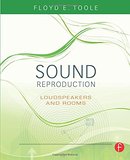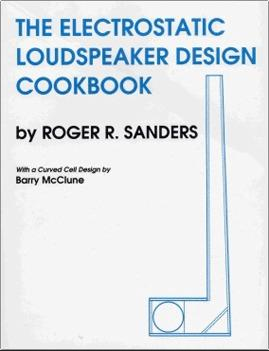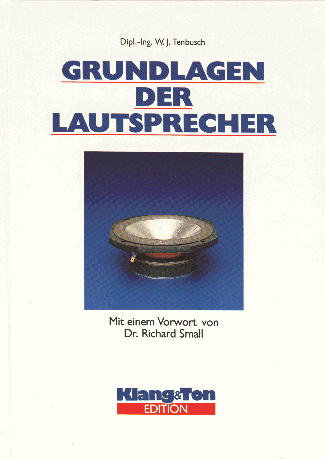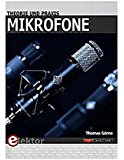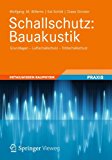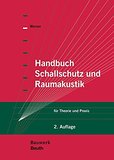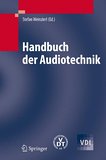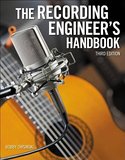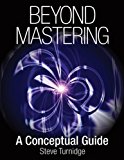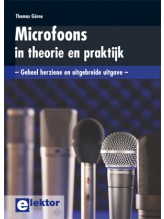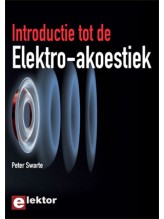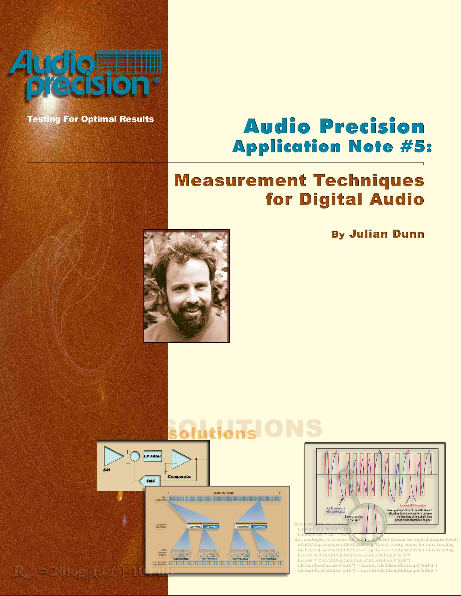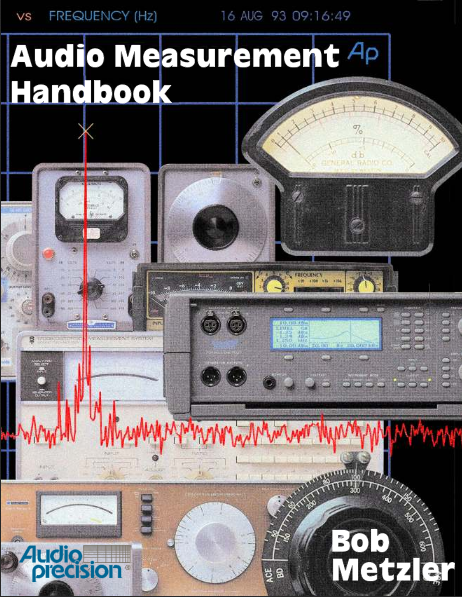Mastering for iTunes
Het productieproces van een muziek-, of audioproject bestaat grofweg uit drie stappen: registratie, mixage en mastering. Tijdens het masteren worden de klankkleur, de ruimtelijkheid, de dynamiek en het volume van verschillende tracks op elkaar afgestemd en geoptimaliseerd. Vervolgens worden de tracks gereedgemaakt voor online verspreiding of cd-replicatie.
Sinds iTunes de Nederlandse markt heeft betreden, zijn er vele technische vragen ontstaan over de mastering van audiotracks voor de distributie via iTunes (Store). De meeste vragen worden duidelijk en grondig beantwoord in de officiele documentatie en op de website, maar sommige aspecten komen daarin niet aan de orde. Laten we dit eens nader onderzoeken...
Het uiteindelijke vereiste audioformaat voor iTunes is AAC, en Apple beveelt het gebruik van 96 kHz, 24 bits bronmateriaal aan, ondanks het feit dat het uiteindelijke resultaat 44.1 kHz zal worden. Dus impliceert dit proces duidelijk een stap van samplingrate conversie (SRC). Laten we de kwaliteit van deze conversie onderzoeken (SRC-analyse en interactieve implemetatie door Alexey Lukin).
Buiten een uitvoerige documentatie en handleiding biedt Apple ook Open Source OSX Software aan om de juiste stappen van conversie te maken: "afconvert utility" biedt een aantal mogelijkheden tot conversie, waaronder norm en bats mode. Allereerst de meetresultaten in norm mode:
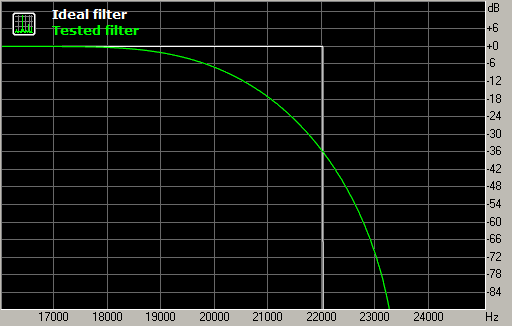
afconvert norm transition
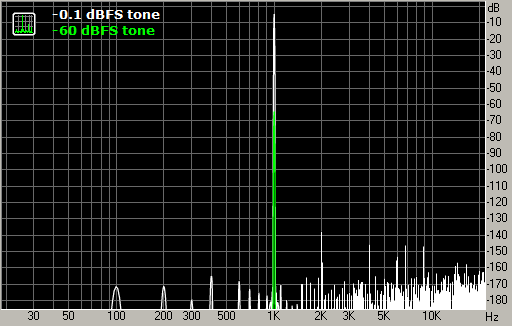
afconvert norm tone
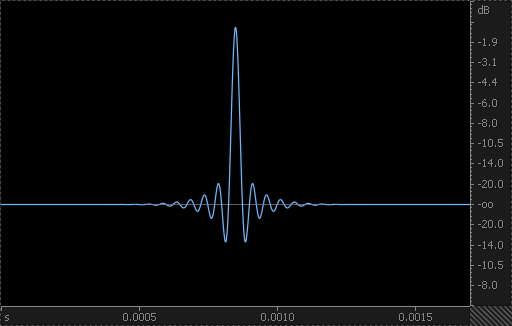
afconvert norm pulse
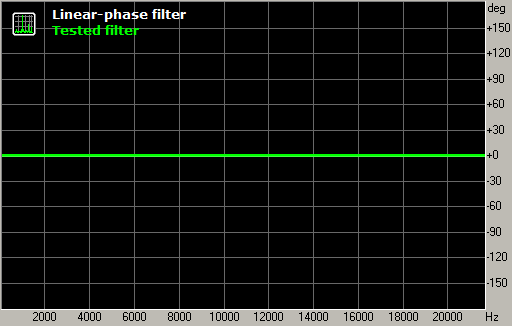
afconvert norm phase
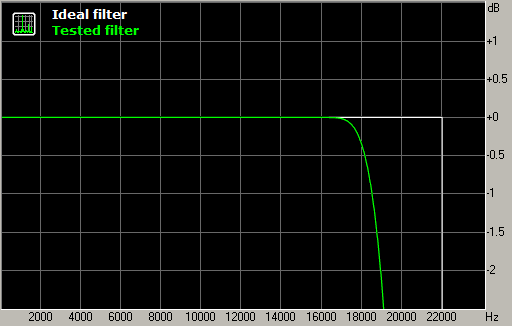
afconvert norm passband
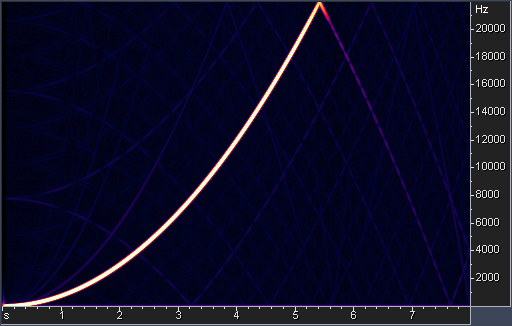
afconvert norm
CONCLUSIE: niet slecht, maar ook niet echt de superkwaliteit dat door Apple wordt geclaimed - de resultaten zijn ronduit middelmatig, zeker vergeleken met de moderne conversie algoritmen van professionele digitale audio editors (DAW).
De tweede mode van "afconvert utility" is bats, en hier zijn de meetresultaten:
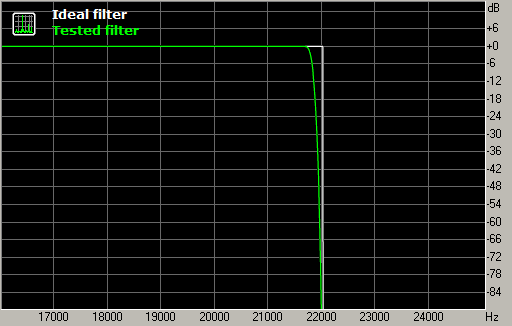
afconvert bats transition
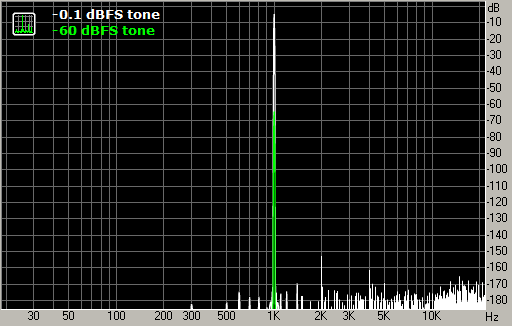
afconvert bats tone
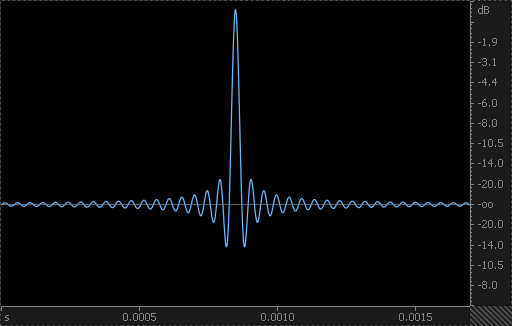
afconvert bats pulse
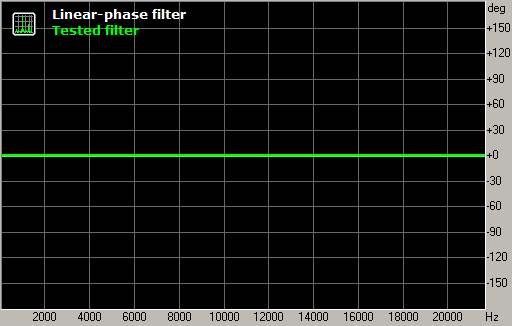
afconvert bats phase
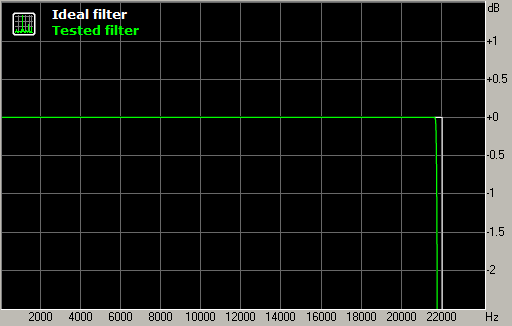
afconvert bats passband
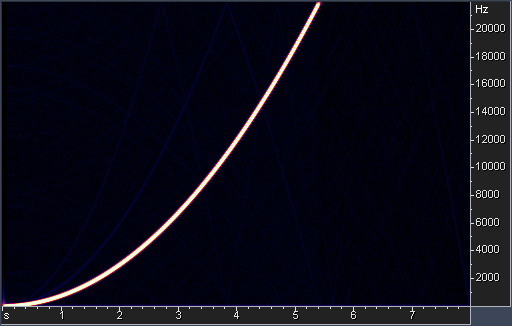
afconvert bats
Dit ziet er al veel beter uit: de resultaten zijn vergelijkbaar met die van de beste samplingrate convertors op de markt.
CONCLUSIE: er is géén meetbaar verschil in conversiekwaliteit, of er nu gebruik gemaakt wordt van een externe high-quality samplingrate converter of de door Apple gebouwde en aanbevolen converter in bats mode.
Het volgende belangrijke punt: signaal niveau.
Apple beveelt in haar richtlijnen het maximale piekniveau van het aangeboden bronmateriaal (inclusief alle intersample-pieken) op -1 dBFs aan. Kan dit niveau overschreden worden? Is 1 dB headroom genoeg om "clipping" van het bronmateriaal tijdens conversie te voorkomen?
Om deze vraag te beantwoorden, is een andere Apple Utility inzetbaar, genaamd: "afclip". Het meet de signaalniveau's van het bronmateriaal, inclusief de intersample-pieken.
Ter experiment nemen we 3 bestanden bronmateriaal op 44,1kHz: het eerste bestand clipt hard op 0 dBFs, het tweede bestand werd zodanig met een limiter bewerkt dat het ware piekniveau tot op -0,5 dBFs komt ("True Peak" houdt rekening met intersample pieken), en een derde bestand werd zodanig met een limiter bewerkt dat het ware piekniveau tot op -1 dBFs komt (Elke limiter met een "intersample detection"-functie zou hiervoor gebruikt kunnen worden).
De analyse en meetresultaten van de bronbestanden produceren verwachtbare resultaten: het eerste bestand vertoont duizenden clippende intersample pieken, de tweede en de derde vertonen er geen. Alhoewel: nadat de bronbestanden naar AAC en terug geconverteerd werden, zien de meetresultaten er nogal verschillend uit: het eerste bestand komt er zeer slecht af... Het tweede bestand vertoont duizenden clippings: dit duidt erop dat de 0.5 dB headroom (zelfs wanneer geanticipeerd op intersample peaks) niet toereikend genoeg is. Het derde bestand voldoet aan Apple’s A-standaard: er is geen clipping gedetecteerd en het orginele audiosignaal geraakte op de best mogelijke manier getranscodeerd.
CONCLUSIE: de aanbeveling welke Apple maakt aangaande signaal piekniveau's is valide: de headroom van 1 dB is noodzakelijk en afdoende om "clipping" van muzikaal materiaal te voorkomen.
CONCLUSIE: het proces van adaptie van reeds bestaande, gepubliceerde CD's voor iTunes distributie omhelst tenminste limiting of verzwakking van het audiosignaal tot -1 dBTP (True Peak) en opslag als 24-bit formaat.
Wat is nu het verschil? Het belangrijkste verschil is dat het gebruik van compressie en limiting, enkel voor het bereiken van "loudness", geen enkele zin meer heeft en zelfs schade kan berokkenen na conversie. De luidheid van tracks in een playlist, afgespeeld met iTunes/iPod, worden op elkaar afgestemd door de standaard ingebouwde functie "Sound Check".
CONCLUSIE: het gebruikmaken van compressie en limiting om de te ervaren "loudness" van bronmateriaal te vergroten, hebben geen enkele zin meer; deze zouden alleen nog maar gebruikt moeten worden voor het creatieve proces, zoals het vormgeven van dynamiek van een track.
Overigens: de bovenstaande aanbeveling geldt ook voor andere audio compressie (lees: komende streaming-) formaten, ...niet enkel voor AAC.
In 2002, nog vóór de lancering van de iTunes Store, kreeg Apple een Grammy Award® voor technische uitmuntendheid in de muziek, de eerste en enige dergelijke onderscheiding ooit uitgereikt aan een bedrijf gespecialiceerd in personal computing.
Met de lancering van iTunes werd er besloten het AAC-formaat (later: AAC plus) te standaardiseren, in plaats van het schijnbaar meer populaire MP3-formaat; simpelweg omdat AAC duidelijk aantoonbaar voorziet in een superieure geluidskwaliteit in vergelijking met andere codecs tegen vergelijkbare bitrates.
Door ook nauw samen te werken met andere audiocompressie-pioniers Dolby Laboratories, Fraunhofer IIS en Sonnox-Fraunhofer IIS, heeft dit sindsdien geleid tot doorgaande verbeteringen (tot op vandaag tot op hoog niveau van uitmuntendheid in luisterervaring) van AAC/iTunes. Als u de in dit document beschreven huidige richtlijnen toepast, kunt u een dynamisch bereik van uw audiomateriaal behalen dat superieur is aan CD/redbook audio; een eindproduct bereiken dat vrijwel niet te onderscheiden is van de oorspronkelijke opname.
Meer over de Apple Mastering Tools:
afclip: de afclip command-line utility kan gebruikt worden om elk audiobestand te controleren op "clipping".
afconvert: de afconvert command-line utility kan gebruikt worden om ge-master-de audiobestanden te encoderen in iTunes Plus formaat.
AURoundTripAAC Audio Unit: de AURoundTripAAC Audio Unit kan gebruikt worden om een iTunes Plus audiobestand auditief te vergelijken met het orginele audiobestand op "clipping".
Master for iTunes Droplet: de Master for iTunes Droplet is een simpele, standalone drag-and-drop tool welke gebruikt kan worden om snel en makkelijk audiobestanden/master te encoderen in iTunes Plus formaat.
Audio to WAVE Droplet: de Audio to WAVE Droplet automatiseert het creeëren van audiobestanden, in WAVE (Waveform Audio File) formaat, van elke audiobestand (zoals MPEG of CAF bestanden) welke "native" wordt ondersteund door Mac OS X.
AAC (Advanced Audio Coding): compressed, lossy, perceptual coding scheme, originally a component of the MPEG-2 standard as MPEG-2 AAC. Defined in 1997 as part of ISO/IEC 13818-7. Enhanced for the MPEG-4 standard as MPEG-4 AAC. MPEG-2 AAC provides better perceived audio quality at the same bit rate compared to MPEG-1, layer 3 ( MP3), according to results published in ISO/IEC JTC1/SC29/WG11, N2006 (February 1998). MPEG-4 AAC extends MPEG-2 AAC with additional coding tools.
Perceptual coding: lossy compression that takes advantage of limitations in human perception. In perceptual coding, audio data is selectively removed based on how unlikely it is that a listener will notice the removal. MP3 and MPEG-2 AAC are popular examples of perceptual coding.
Crossing borders, connecting knowledge, get inspired by art & science:
Micro Modal Modulations,
Electronics & Acoustics, Analysis & Synthesis, Music & Technology, Sound & Design, Interaction & Communication, Drama & Expression, Education & Composition,
Research & Development, Engineering & Consultancy.
acoustiColour
For more information on:
Music Technology, Audio Technology, Sound Design, R&D & Education:
References
(This website is currently under heavy revision!).
Welcome! Thank you for visiting the official acoustiColour website.
About
acoustiColour crossing borders, connecting knowledge, ..and getting inspired by art & science.
Because music is art & sound science, in 1988 acoustiColour is founded by musictechnologist (multidisciplined & certificated: electronics-, audio-, recording-, mix-, mastering engineer, composer, sound designer) and teaching musician Marcel Wardenier.
(Call +31 6 26 46 20 88 or email me).
(...who is also having problems with beliefs and much prefers to let physics do the talking! (John Watkinson on Slaying Dragons)).
Services
Provided by acoustiColour.
Micro Modal Modulations,
Electronics & Acoustics,
Analysis & Synthesis,
Music & Technology,
Sound & Design,
Interaction & Communication,
Drama & Expression,
Education & Composition,
Research & Development,
Engineering & Consultancy.
Music Technology, Audio Technology, Sound Design, R&D, Education.
- Accessibility
- Acoustics
- Analysis
- Apple/OS X
- Arduino
- Arrangement
- AVB
- Balancing
- Calibration
- Composition
- Computer Music
- Computer Music Theory
- Cyber Hygiene (AES67)
- Cyber Security (AES67)
- DAW
- Debian
- Demonstrations
- Design
- Development
- DIY
- DRC
- DSP
- EBU R128/LuFS Transcoding
- Education
- Electronics
- Electronic Music
- Electronic Music Theory
- Embedded
- FIR
- Hearing Impairment
- HE-AAC/AAC+ Transcoding (MFiT)
- Home theatre
- IIR
- Instrument
- Linux
- Listening Room
- Live
- Loudspeaker
- Mastering
- Master Quality Authenticated Transcoding (MQA)
- Measurement (Audio)
- Measurement (Acoustic)
- MIDI
- Mixage
- Modification
- Music
- Music Theory
- Privacy
- Production
- Raspbery Pi
- Recording
- Re-recording
- Restoration
- Sampling+Synthesis
- Sounddesign
- Studio (Project)
- Synthesis
- Tuning
- Tutorials
- Workshops
- 1-2-1 tuition
- Etc.
Back to Menu.
For more information:
Resources
Stuff acoustiColour uses daily and do highly recommend you to check them out!
Tools
Calculators:
- SRC (Alexey Lukin, Infinite Wave)
- Room Acoustics (Linkwitz)
- Room Acoustics (Winer)
- Room Acoustics (HOFA)
- Room Acoustics (Hunecke)
- Roommodes (Gold)
- Roommodes (Winer)
- Roommodes (Wieczorek)
- Roommodes (MH)
- RT60 (Wieczorek)
- RT60 (MH)
- Placement Options (NoAudiophile)
- Golden Triangle (Cardas)
- Golden Placement (Cardas)
- Absorbers & Diffusers (MH)
- Resonators (Helmholtz)
- Diffusors (Schrödinger)
Measuring Hardware:
- WC CC1 Master Word Clock
- I/O RME FF 400 (2)
- I/O RME HDSP 9632
- Mic MBHO MBNM 550 EL
- Mic (mod.) ECM8000L
- Mic MiniDSP UMIK-1
- Mic MicW i436
- Amp Hypex NC400 monobloc
- Amp MiniDSP PWR-16
- Amp Quad 303 MK3 monobloc
Measuring Software:
- Aliki (Adriaensen)
- ARTA (Mateljan)
- Baudline (SigBlips)
- DIGICheck (RME)
- Friture (Lecomte)
- Fuzzmeasure (SMUG)
- IQ-Analyser (HOFA)
- LIMP (Mateljan)
- MATLAB (MathWorks)
- REW (Mulcahy)
- RMAA (RightMark)
- STEPS (Mateljan)
Room Correction:
- Align2 (Ohl)
- BruteFIR (Torger)
- DRC (Sbragion)
- DRC Designer (Jordan)
- DSP (Barbour)
- Equalizer APO (Thedering)
- PORC (Bank)
- rePhase (Drugeon)
Miscellaneous Software:
- ARDOUR (Community)
- AU Lab (Apple)
- CALF (Community)
- Debian (Community)
- JACK (Community)
- KXStudio (Community)
- MIXBUS (Harrison)
- Sonic Pi (Sam Aaron, Community)
- SOX (Bagwell)
- UbuntuStudio (Community)
Back to Menu.
Project Software Downloads:
Inspired by some of the most groundbreaking innovative audio pioneers/gurus acoustiColour created bootable CD/USB/VM images with clean builds of a hardened Debian Server for experimental dedicated realtime DSP Low-Latency JACK Audio Server Applications.
Disclaimer: as is, because this is work in progress.. (Altough functioning 99.99% stable in my audiolab 24/7!)
Please: don't forget to check out the tutorials & RTFM's!!
(And if you do read them, you'll notice how easy the concept is ported to other hardware platforms ☺!!)
(...acoustiColour simply loves the power of Open Source Software and Debian installed on a nowadays old useless-, but relatively silent Mac Mini 2,1+. Easily 'build' your own DSP power house running 16/24 bits 44.1/48/(96*) kHz., syncing on WC via S/PDIF signal using one of these instant functioning DSP bootable disk images.
- ISO iBruteFIR (Tutorials: 1 2 3)
- ISO iDRC (Tutorials: 1 2 3)
- ISO iHIAC-DSP (Tutorials: 1 2 3)
- ISO iSonicPi (Tutorials: 1 2 3)
(*) Dependent on production date of Mac Mini 2,1+
Back to Menu.
Books:
Back to Menu.
Magazines:
Back to Menu.
Links:
- AVnu/OpenAvnu (AVB)
- EBU Loudness (PLOUD)
- EBU R128
- EBU R128s1
- EBU R128 tech 3341
- EBU R128 tech 3342
- EBU R128 tech 3343
- EBU R128 tech 3344
- On the way to Loudness Nirvana - with EBU R 128
- Loudness - don't forget the distribution chain!
- flac.org
- iHEAR
- Bob Katz Mastering
- Kokkini Zita
- Linkwitz Lab
- Linuxaudio.org
- George Massenburger Labs
- NwAvGuy
- Bruno Putzeys
- Speaker & Co
- Speakerland
- Tidal
- Ethan Winer
Back to Menu.
Journals:
Back to Menu.
Institutes:
Back to Menu.
About your secure acount:
(FTPS Client required!)
Colophon
Credits & Rights
All design and content are ©1972-2017 by: Marcel Wardenier / acoustiColour / Wardenier Web Work, except where otherwise noted. Link to it all you want, but please don't take it and publish it elsewhere. I will consider writing something similar for your site, if you ask. I might even do it for free, under the right circumstances... but ya gotta ask!
The content of e-mail posted to me via this site remains the property of its original author(s).
Privacy
The content of e-mail posted to me via this site will be kept in strictest confidence, except in (the presently unlikely) cases where vital public or personal interest requires otherwise. In other words, don't confess to me here that you're an uncaught felon or be otherwise stupid unless you want to take your chances, okay?
I reserve the right to archive or delete as I see fit message traffic and logfiles relating to this site.
This policy is subject to change without notice.
Accessibility
At the heart of the Debian's philosophy (including Debian based distributions like Ubuntu and Linux Mint) is the belief that computing is for everyone, whatever your circumstances (or disability). Debian/Ubuntu (Linux Mint) is one of the most accessible operating systems and is fully translated into 25 languages with more being added all the time.


